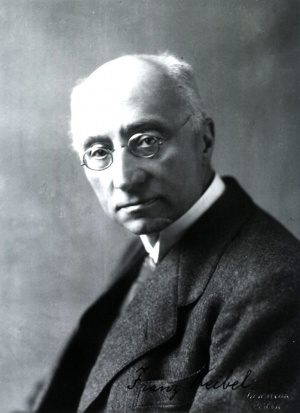Book - Manual of Human Embryology 2
| Embryology - 1 May 2024 |
|---|
| Google Translate - select your language from the list shown below (this will open a new external page) |
|
العربية | català | 中文 | 中國傳統的 | français | Deutsche | עִברִית | हिंदी | bahasa Indonesia | italiano | 日本語 | 한국어 | မြန်မာ | Pilipino | Polskie | português | ਪੰਜਾਬੀ ਦੇ | Română | русский | Español | Swahili | Svensk | ไทย | Türkçe | اردو | ייִדיש | Tiếng Việt These external translations are automated and may not be accurate. (More? About Translations) |
Keibel F. and Mall FP. Manual of Human Embryology I. (1910) J. B. Lippincott Company, Philadelphia.
Keibel F. II. Fertilization in Keibel F. and Mall FP. Manual of Human Embryology I. (1910) J. B. Lippincott Company, Philadelphia.
| Historic Disclaimer - information about historic embryology pages |
|---|
| Pages where the terms "Historic" (textbooks, papers, people, recommendations) appear on this site, and sections within pages where this disclaimer appears, indicate that the content and scientific understanding are specific to the time of publication. This means that while some scientific descriptions are still accurate, the terminology and interpretation of the developmental mechanisms reflect the understanding at the time of original publication and those of the preceding periods, these terms, interpretations and recommendations may not reflect our current scientific understanding. (More? Embryology History | Historic Embryology Papers) |
II. Fertilization
By Franz Keibel, Freibueg i. Bb.
Nothing is known concerning the fertilization of the human ovum, but it may be presumed that it takes place in essentially the same maimer as in other mammals, and for an account of the process in these forms reference may be had to the works of Sobotta and Leo Gerlach, cited in the preceding chapter. The usual place for fertilization must be the first portion of the tube. That the spermia penetrate into the tube has been observed (DiLhrssen: Sb. d. Ges. f. Gyn. und Geburtsh. in Berlin, 1893; and Zweifel: Lehrbuch der Geburtshilfe, " 3 Aufl., 1902), and is also made certain by the occurrence of tubal pregnancies. Occasionally the union of the ovum and sperm-cell may take place upon the surface of the ovary or even in the interior of the Graafian follicle, as is definitely shown by rarely occurring cases of ovarian pregnancy (see Freund and Thome [1], and Bryce, Teacher, and Kerr[2]. Accurate estimates of the rapidity of penetration of the spermia into the uterus and tubes are not available, but it may be supposed that in one or two hours after coitus the spermia have penetrated far into the tubes. That fertilization of the ovum may take place after it has reached the uterus seems to me from observations on other mammals very improbable; at all events no good grounds for such a supposition seem to exist. Nevertheless Wyder[3] regards the uterus as the normal site of fertilization; and other gynocologists — Hofmeier, for example — agree that fertilization may occasionally take place in the uterus. Waldeyer also comes to this conclusion and states (Hertwig's Handbuch, vol. i, p. 370) that, "It cannot be denied, however, that under certain circumstances fertilization may first occur in the uterus"; he does not state, however, what these circumstances may be.
- ↑ H. W. Freund and R. Thome: Eierstoekschwanerschaft, Virch. Arch., vol. clxxxviii, pp. 54-91.
- ↑ Bryce TH. and Teacher JH. Contributions To The Study Of The Early Development And Imbedding Of The Human Ovum 1. An Early Ovum Imbedded In The Decidua. (1908) James Maclehose and Sons. Glasgow.
- ↑ Th. Wyder: Beitrage zur Lehre von der Extrauterinschwangerschaft und dem Orte des Zusammentreffens von 0vulum und Spermatozoen, Arch. f. Gynakol., vol. xxviii, 1886.
| Historic Disclaimer - information about historic embryology pages |
|---|
| Pages where the terms "Historic" (textbooks, papers, people, recommendations) appear on this site, and sections within pages where this disclaimer appears, indicate that the content and scientific understanding are specific to the time of publication. This means that while some scientific descriptions are still accurate, the terminology and interpretation of the developmental mechanisms reflect the understanding at the time of original publication and those of the preceding periods, these terms, interpretations and recommendations may not reflect our current scientific understanding. (More? Embryology History | Historic Embryology Papers) |
Glossary Links
- Glossary: A | B | C | D | E | F | G | H | I | J | K | L | M | N | O | P | Q | R | S | T | U | V | W | X | Y | Z | Numbers | Symbols | Term Link
Cite this page: Hill, M.A. (2024, May 1) Embryology Book - Manual of Human Embryology 2. Retrieved from https://embryology.med.unsw.edu.au/embryology/index.php/Book_-_Manual_of_Human_Embryology_2
- © Dr Mark Hill 2024, UNSW Embryology ISBN: 978 0 7334 2609 4 - UNSW CRICOS Provider Code No. 00098G

